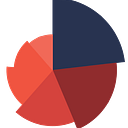What is statistics after all?
Isn’t it funny that so many researchers use statistics all the time and still have no clear notion of what it is and why it is necessary after all!
Let’s first see why do we need it.
We need statistics because we need to make decisions- all the time. And the decisions in complex settings must be based on data rather than mere assumptions. A physician can only prescribe a new diabetes medication after it has passed the routine control trials. A business owner will advertise a certain product only to the age groups or regions most likely to buy it. And terms like control and likelihood are everywhere in statistics.
Let’s talk about a more statistical scenario.
Let’s say you want to know the countries with the highest average height among athletes, and you must collect and analyze data to get that knowledge. It is important to remember here that, unlike mathematics, statistics is not deterministic but rather probabilistic undertaking. It is a method of calculating a certain parameter for the entire population by analyzing a small sample only. This is why a confidence interval (CI)generally accompanies the statistic. A CI indicates a level of certainty. For instance, a mean height of 170cm with 95% CI of 164cm and 181cm among athletes would imply that 95 out of 100 times the estimate will fall between that confidence range. As such, statistical measures are rarely accurate and can vary substantially depending on the methodological approaches.
In the previous example of estimating the height of the athletes, it’d be impractical to take the height of every single athlete in the country. And this is where statistics enters the picture. Statistics help us take a small slice of the population and make inferences for the entire population, and the estimations are derived through mathematical formulas. This is why it is important to have at least some basic knowledge of statistics and mathematics to separate signals from noise and avoid making erroneous conclusions.
Now it naturally begs the question of whether statistics is a subdomain of mathematics. That discussion is for another afternoon, but for now, it should suffice to say that mathematics aims to prove theorems, while statistics aims to develop methods for understanding data and making decisions. Statisticians do resort to mathematical theorems to justify their methods but proving those theorems is not necessarily what they get hired for.
Luckily for most of today’s busy learners, it is quite possible to use statistical methods without mastering the esoteric math lurking in the background. Numerous statistical softwares like R, Stata, and SPSS take care of the complex algorithms, and it is enough to master a software to explore data. What we should bear in mind though is that statistics are there to help process data the way we want, and it is entirely on the researcher to ensure that the method we are using is sound for the type of data. It’s not for nothing that blogs like ‘how to choose the right statistical methods’ are still in business. I read many peer-review articles where authors fail to use the right method for analyses as basic as finding group differences and relationships between variables.
More ironic is equating statistical relationships to real-life phenomena without basic logic. We all are vulnerable to this because the universe is full of correlations, and it is very easy to find relationships between completely unrelated events…
On a fine day, diamond rain in Saturn may show strong correlation with mid-life crisis for sad Hungarians who have taken citizenship in a distant Jamaican island, making a philosopher ponder on an untested drink what life is all about!
The point is, it is entirely possible that a research team conducts a study as the protocol dictates, analyzes and interprets the data and makes an alluring conclusion and still completely misses the point. And it can be astonishing to know for what percentage of the current research volume is this true!
